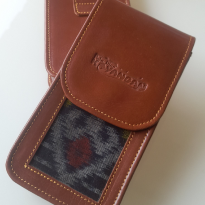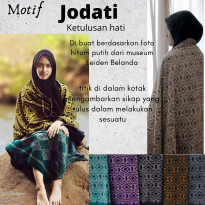PUTA DINO KAYANGAN, Traditional Woven Fabric of Tidore. For around 100 years, the woven cloth and weaving culture of Tidore seemed to have vanished, until several 16 to 27-year-old Tidorans embarked on a quest to find and recreate them from scratch based on the photos and stories they heard from an elderly 80-year-old.
The revitalization program was enacted to maintain and preserve a culture that had once been lost and to open new employment opportunities. The program engages high school students and inmates at the Tidore Detention Center.
The motifs were selected based on old photos that spoke of bygone tales and high philosophies.
We also produce derivative products from woven fabrics and scraps (leftover cloths and yarns) using manual loom, natural dyes, and product remnants.
Memanfaatkan perca2 kecil kain di susun menjadi rangkaian kain kemudian di modifikasi dengan kulit sapi asli yg natural. Di jahit dengan tangan
Memadukan perca tenun pada kulit sapi asli. Di fungsikan sebagai tas pinggang yang keren
Barakati artinya di berkahi. Tergambar pada motif motif mahkota menghadap ke atas dan kebawah juga 4 arah penjuru mata angin. yang bercerita tentang pemimpin yang mengayomi warganya kalangan atas dan bawah juga di semua penjuru.
Kain dengan motif kalajengking bercerita tentang hewan kecil yang walaupun berukuran kecil tapi mempunyai kekuatan yang besar dan mematikan. Sifat diam tapi selalu waspada. Kalajengking adalah binatang khusus kesultanan Tidore. Bentuk bangunan kerajaan dan panji2 juga berbentuk kalajengking.






